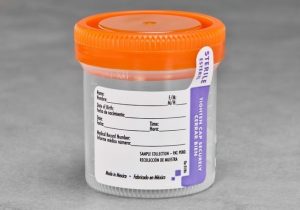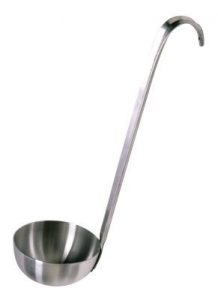Module 9: Urine Culture and Sensitivity
Module 9.2: Collecting a Sample to Diagnose a UTI
Cystocentesis
As stated before, the urinary bladder is not a sterile environment, so how do we define a UTI? If an animal is showing clinical signs of a UTI, the gold standard method for urine collection is via cystocentesis (direct extraction of urine from the bladder using a needle).

Midstream urine catch

For a myriad of reasons, cystocentesis may not be possible or feasible. In those cases, a midstream urine catch into a sterile urine jar is the next best. It is important that the collection be midstream to decrease the number of normal genital flora that ends up in the sample as the act of micturition releases build-ups of normal genital flora into the environment.

In most clinical veterinary settings, catching 5-10 mL of mid-steam urine into the small sterile cup is not easy nor feasible. In those cases, it is considered the accepted practice to use a clean (ideally sterile) soup ladle or small bowl for urine collection. It is good practice to document the collection method in case the results that you receive do not match your clinical suspicion and may indicate contamination.

What about timing?
In both people and animals, the best time to collect a urine sample for culture is the first thing in the morning.
Why do you think this would be?
Overnight, while the animal is sleeping the bacteria continues to proliferate within the bladder, thus the first micturition of the morning is the best sample to culture for a UTI pathogen.

